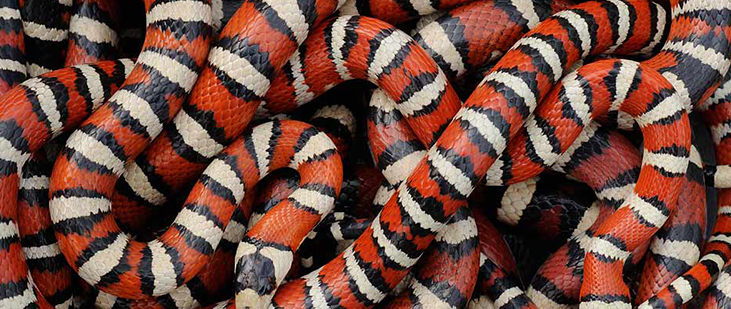By Daniel N. Jones | Aeon Magazine | October 20, 2014
It’s the friend who betrays you, the lover living a secret life, the job applicant with the fabricated résumé, or the sham sales pitch too good to resist. From the time humans learnt to co‑operate, we also learnt to deceive each other. For deception to be effective, individuals must hide their true intentions. But deception is hardly limited to humans. There is a never-ending arms race between the deceiver and the deceived among most living things. By studying different patterns of deception across the species, we can learn to better defend ourselves from dishonesty in the human world.
My early grasp of human deception came from the work of my adviser, the psychologist Delroy Paulhus at the University of British Columbia in Canada, who studied what he called the dark triad of personality: psychopathy, recognised by callous affect and reckless deceit; narcissism, a sense of grandiose entitlement and self-centered overconfidence; and Machiavellianism, the cynical and strategic manipulation of others.
If you look at the animal world, it’s clear that dark traits run through species from high to low. Some predators are fast, mobile and wide-ranging, executing their deceptions on as many others as they can; they resemble human psychopaths. Others are slow, stalking their prey in a specific, strategic (almost Machiavellian) way. Given the parallels between humans and other animals, I began to conceive my Mimicry Deception Theory, which argues that long- and short-term deceptive strategies cut across species, often by mimicking other lifestyles or forms.
Much of the foundational work for this idea comes from the evolutionary biologist Robert Trivers, who noted that many organisms gain an evolutionary advantage through deception. For example, among birds, a female can trick a trusting male into believing he is raising his own offspring, when he might be raising the offspring of another male. One of the most popular examples of deception in plants is the Venus flytrap. It looks harmless to hungry insects by lying still, just like every other plant. However, the plant is carnivorous and will snap shut, consuming insects that get too close.
Viral and bacterial infections are deceptive too. The microbiologist Ursula Goodenough at Washington University argues that the co-evolutionary arms race between immune systems and infections is slow and protracted, like a cold war. Some infections, such as tuberculosis, hide from immune system defences inside the host’s own cells. Much like packaging a computer virus in a professional-sounding email, the Trojan horse is later released in the body, where havoc ensues. HIV is even stealthier because it inhabits our very immune cells, rendering them dysfunctional. Using such strategies, the microbes replicate over and over, eventually destroying their opponent army, which is the human immune system.
At some point, all of us will play the role of both the deceiver and the deceived. After all, deception is part of life. Some deceptions can come from a place of love or kindness: ‘Your cooking is delicious!’ But harmful lies abound, and we are victimised by those every day. Some of these can be short-term, such as eliciting personal information with a phishing-style email and then plundering a bank account. Other deceptions are perpetrated for years – take the spouse who has serial affairs. And while it is never an excuse, these tendencies are evolutionary –biological in origin and, like other evolutionary traits, found in a spectrum from mild to intense. In response, we have also evolved the ability to detect deception, but some of us are more attuned.



